
The Majestic Tottori Sand Dunes: Japan's Desert Wonderland
Discover the Tottori Sand Dunes, Japan's breathtaking desert landscape offering unique adventures, stunning views, and an artistic touch at the Sand Museum.
The Tottori Sand Dunes are a unique and captivating sight in Japan. Spanning over 16 kilometers along the Sea of Japan coast, these dunes offer an extraordinary landscape that feels worlds away from the lush greenery typically associated with the country. The dunes, formed over thousands of years by sediment deposits from the nearby Sendai River, can reach heights of up to 50 meters, providing breathtaking views of the sea and the surrounding area. Visitors can experience a range of activities at the Tottori Sand Dunes. Camel rides offer a taste of desert life, while paragliding and sandboarding provide thrilling adventures for the more daring. The Sand Museum, located nearby, showcases intricate sand sculptures created by artists from around the world, adding an artistic flair to the natural beauty of the dunes. The dunes are also a haven for nature lovers. The shifting sands create a dynamic environment where unique flora and fauna thrive. Seasonal changes bring different experiences, from the vibrant colors of spring flowers to the serene, snow-dusted landscape in winter. Whether you are seeking adventure, art, or natural beauty, the Tottori Sand Dunes offer an unforgettable destination in Japan.
Local tips in Tottori Sand Dunes
- Visit early in the morning or late afternoon to avoid the midday heat and enjoy the dunes in a softer light.
- Wear comfortable shoes suitable for walking on sand and bring plenty of water, especially during the summer months.
- Check the weather forecast before planning activities like paragliding or sandboarding as these can be affected by wind conditions.
- Don't miss the Sand Museum for a unique display of sand art from international artists.
- Consider visiting during different seasons to experience the changing landscape and diverse flora and fauna.
The Majestic Tottori Sand Dunes: Japan's Desert Wonderland
The Tottori Sand Dunes are a unique and captivating sight in Japan. Spanning over 16 kilometers along the Sea of Japan coast, these dunes offer an extraordinary landscape that feels worlds away from the lush greenery typically associated with the country. The dunes, formed over thousands of years by sediment deposits from the nearby Sendai River, can reach heights of up to 50 meters, providing breathtaking views of the sea and the surrounding area. Visitors can experience a range of activities at the Tottori Sand Dunes. Camel rides offer a taste of desert life, while paragliding and sandboarding provide thrilling adventures for the more daring. The Sand Museum, located nearby, showcases intricate sand sculptures created by artists from around the world, adding an artistic flair to the natural beauty of the dunes. The dunes are also a haven for nature lovers. The shifting sands create a dynamic environment where unique flora and fauna thrive. Seasonal changes bring different experiences, from the vibrant colors of spring flowers to the serene, snow-dusted landscape in winter. Whether you are seeking adventure, art, or natural beauty, the Tottori Sand Dunes offer an unforgettable destination in Japan.
When is the best time to go to Tottori Sand Dunes?
Iconic landmarks you can’t miss
The Sand Museum
Experience the stunning artistry of sand sculptures at The Sand Museum in Tottori, a unique attraction that celebrates the beauty of ephemeral art.
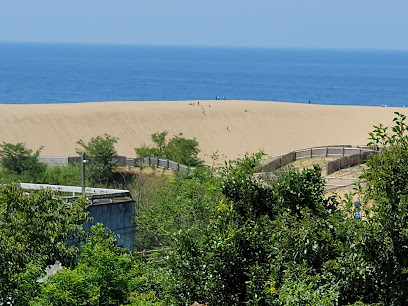
Horse Back Dune
Experience the breathtaking Horse Back Dune in Tottori, Japan, where natural beauty and adventure unite for an unforgettable journey.
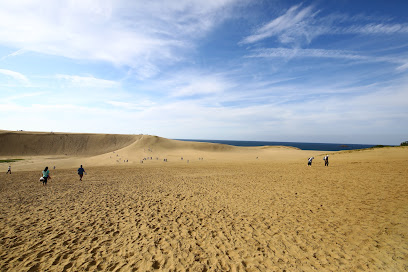
Unmissable attractions to see
The Sand Museum
Experience the captivating artistry of The Sand Museum in Tottori, where intricate sand sculptures bring nature and culture to life.

The Sand Museum
Explore the world's only Sand Museum in Tottori, Japan, where art meets nature in breathtaking sand sculptures.

Hakuto Shrine
Discover the serene beauty and rich cultural heritage of Hakuto Shrine, a must-visit Shinto shrine in Tottori, Japan.
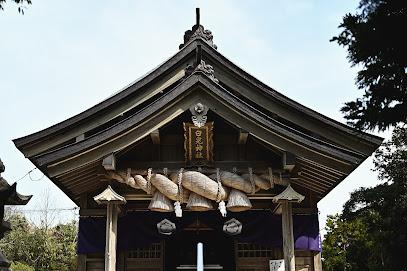
Horse Back Dune
Discover the breathtaking Horse Back Dune in Tottori, Japan - a unique blend of adventure and natural beauty awaits every traveler.
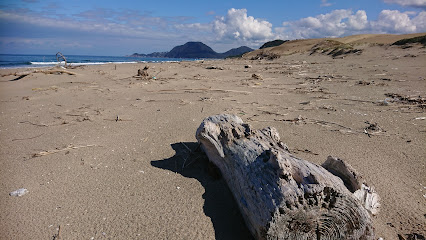
Tottori Sand Dunes Park Service Center
Discover the breathtaking beauty of Tottori Sand Dunes Park Service Center, your gateway to Japan's stunning sand dunes and unique ecosystems.
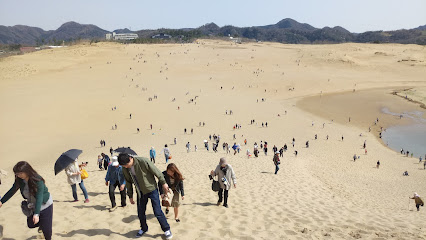
Tottori Sakyu Kodomo-no-kuni
Discover endless fun and adventure at Tottori Sakyu Kodomo-no-kuni, a family-friendly theme park in Japan's scenic Tottori region.
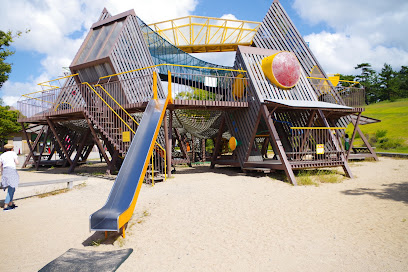
Tottori Karo Crab Aquarium
Explore the unique marine life at Tottori Karo Crab Aquarium, a captivating destination showcasing the fascinating world of crabs in Tottori, Japan.
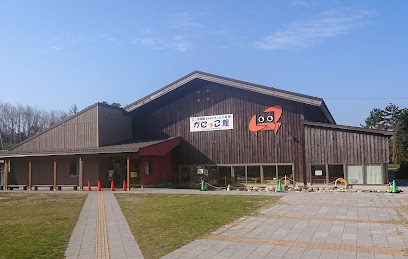
Tottori Prefectural Museum
Explore the rich history and culture of Tottori Prefecture at the Tottori Prefectural Museum, a haven for art and heritage enthusiasts.
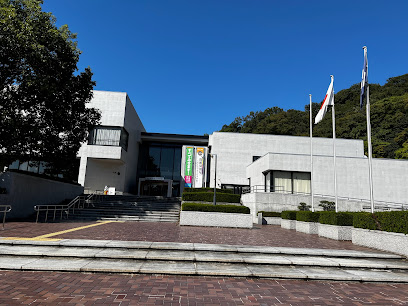
鳥取城跡 天球丸
Explore the historical essence of Tottori at the stunning Tottori Castle Ruins, where history meets breathtaking views.
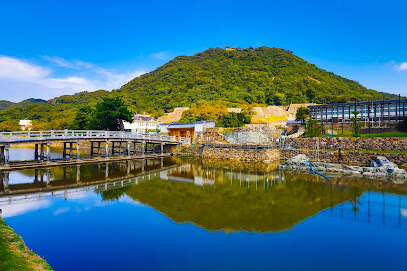
WarabeKan
Discover the enchanting world of toys at WarabeKan, a unique museum in Tottori showcasing the cultural significance of play across generations.
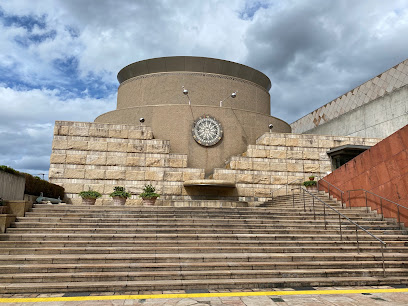
Jinpukaku Mansion
Explore Jinpukaku Mansion, a historical landmark in Tottori that showcases the beauty of Meiji-era architecture and serene Japanese gardens.
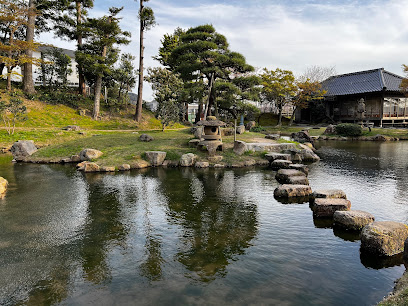
Sakyu Center Observation Terrace
Experience breathtaking views of Tottori's sand dunes at the Sakyu Center Observation Terrace, a must-visit tourist attraction offering panoramic landscapes.
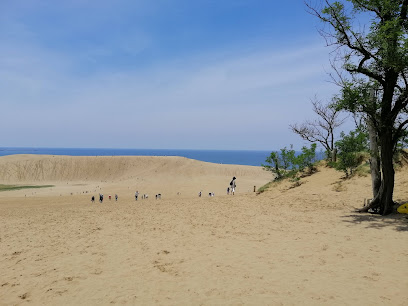
Amedaki Falls
Discover the tranquil beauty of Amedaki Falls in Tottori, Japan, a breathtaking natural wonder perfect for relaxation and photography.
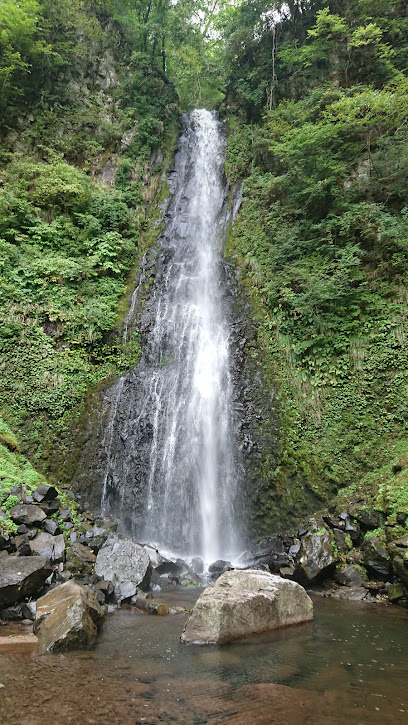
Watanabe Museum
Discover the Watanabe Museum in Tottori, where art transcends boundaries and cultural heritage comes alive through diverse exhibitions.
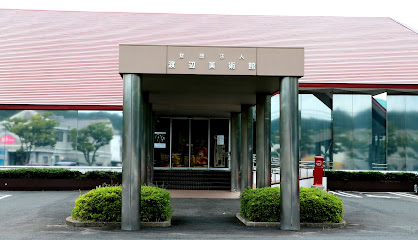
Tottori Sand Dunes Paraglider Sakyu Honpo
Experience the breathtaking beauty of Tottori Sand Dunes from above at Sakyu Honpo, a premier paragliding destination in Japan.
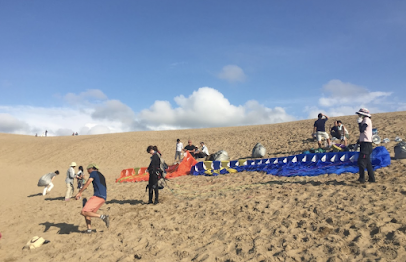
Essential places to dine
Sakyu Kaikan
Discover Sakyu Kaikan in Tottori: A unique blend of seafood dining, local souvenirs, and breathtaking views near Japan's stunning sand dunes.
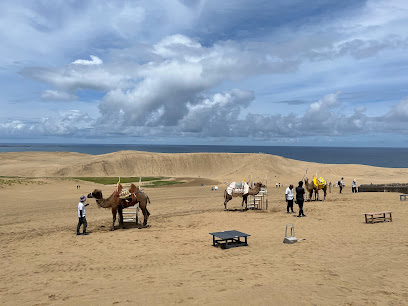
Ichiba-Shokudo Karo
Discover fresh seafood delights at Ichiba-Shokudo Karo in Tottori - where authentic Japanese flavors meet casual dining.
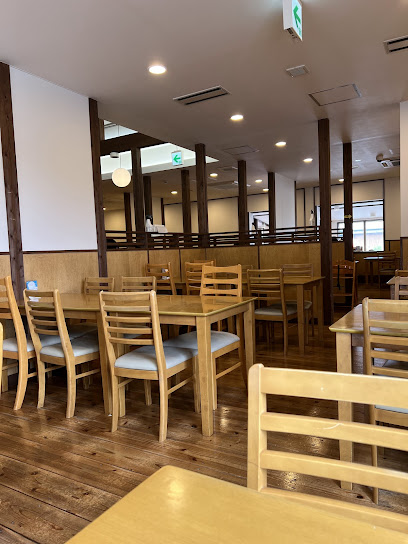
KaiyoTei
Experience Tottori's finest seafood at KaiyoTei – where every dish tells a story of Japan's rich culinary heritage.
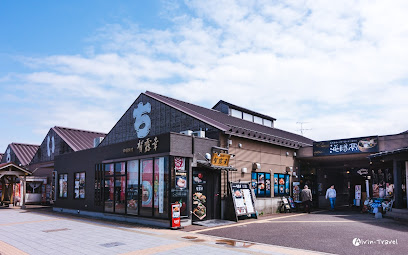
Taiki The Seafoods Bowl
Discover exquisite seafood bowls at Taiki The Seafoods Bowl in Tottori - where freshness meets tradition for an unforgettable dining experience.
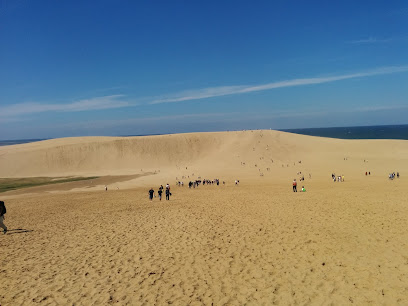
Wakabayashi
Experience authentic Japanese seafood at Wakabayashi in Tottori—where fresh ingredients meet culinary tradition.
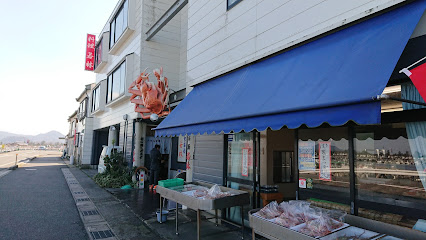
海鮮問屋村上水産鮮魚部 砂像バス停前店
Experience authentic Japanese seafood donburi at Murakami Suisan in Tottori—where every dish tells a story of local tradition.
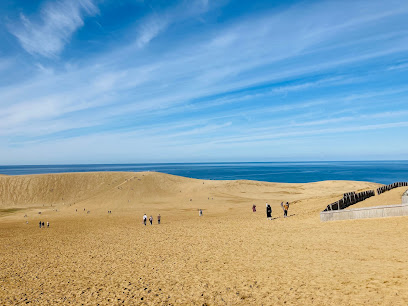
Umenoi
Experience the exquisite flavors of traditional Kaiseki dining at Umenoi in Tottori—where every meal tells a story.
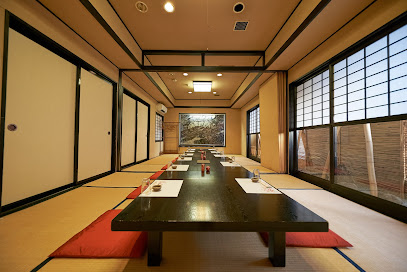
プリン専門店 Totto PURIN.
Experience the delicious world of Japanese desserts at Totto PURIN in Tottori - home to exquisite puddings and delightful pastries.

Bon-appetit
Discover exquisite French cuisine at Bon-appetit in Tottori – where every meal is a celebration of flavor and elegance.
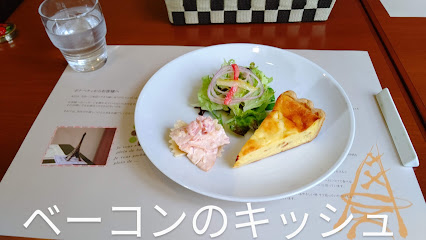
Ray Garden
Experience exquisite dining at Ray Garden in Tottori—where local flavors meet stunning views in an enchanting setting.
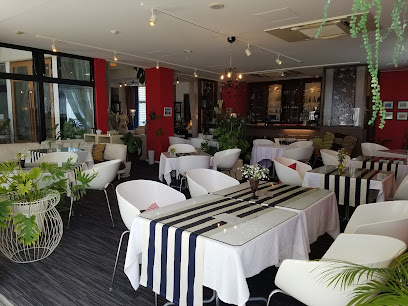
Drive in Sakyu
Experience authentic Japanese cuisine at Drive in Sakyu in Tottori—delicious food awaits you!
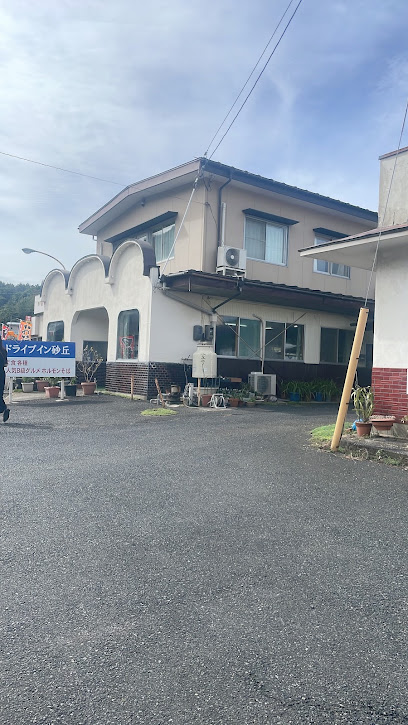
Sankouen in Sakyu
Experience authentic Japanese dining at Sankouen in Sakyu – where tradition meets flavor amidst serene surroundings.
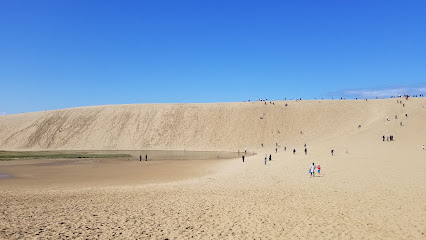
最高のビュースカイラウンジ(クラブハウス2F一般開放)
Experience exquisite Japanese cuisine and breathtaking views at The Ultimate View Sky Lounge in Tottori - where every meal becomes a memory.
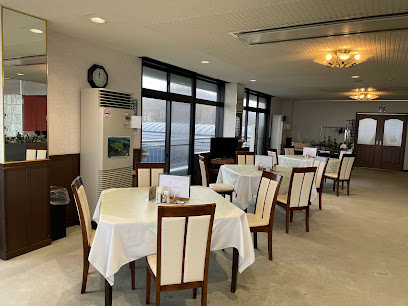
Markets, malls and hidden boutiques
Tottori Sand Dunes
Explore the breathtaking Tottori Sand Dunes, a national reserve that showcases Japan's stunning coastal landscapes and unique desert-like environment.
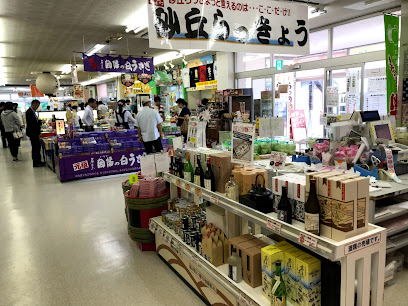
The Sand Museum
Discover the enchanting world of sand art at The Sand Museum in Tottori, Japan, where creativity meets nature in stunning sculptures.
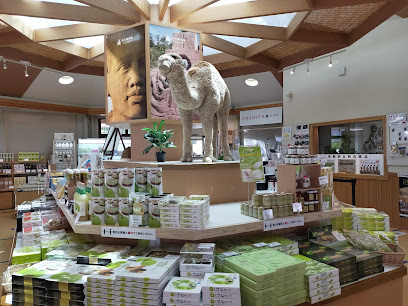
AEON MALL Tottori Kita
Discover a vast selection of shops and dining options at AEON MALL Tottori Kita, an essential destination for shoppers and families in Tottori, Japan.
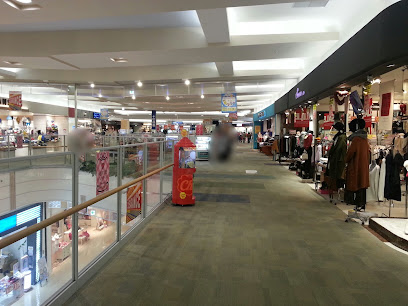
Natural Farm Coco Garden
Experience the charm of Natural Farm Coco Garden, a café in Yazu offering exquisite coffee, delightful desserts, and serene countryside views.
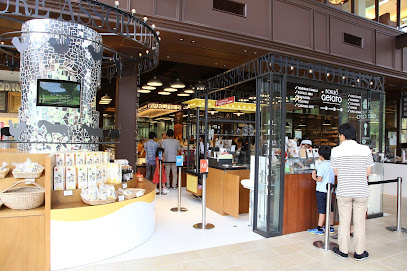
Sakyu Kaikan
Experience the best of Tottori at Sakyu Kaikan, where fresh seafood, local crafts, and stunning landscapes come together in one unforgettable visit.
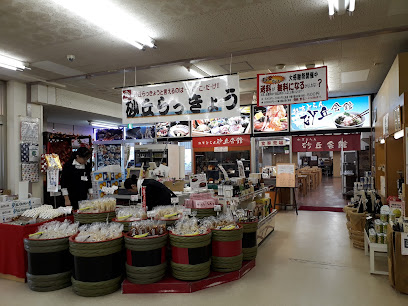
Horse Back Dune
Discover the breathtaking Horse Back Dune in Tottori, a stunning natural wonder perfect for adventure and nature lovers.

Uradome Coast Island Cruise
Discover the breathtaking views and delicious seafood on the Uradome Coast Island Cruise, a must-do experience for all visitors in Tottori.
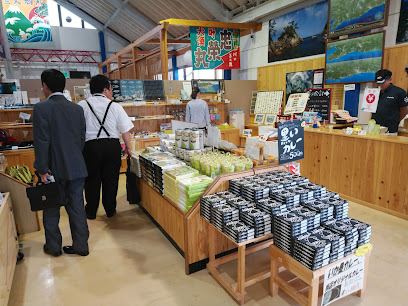
Tottori Sand Dunes Park Service Center
Explore the stunning Tottori Sand Dunes Park, Japan's majestic landscape of dunes, adventure activities, and cultural treasures.
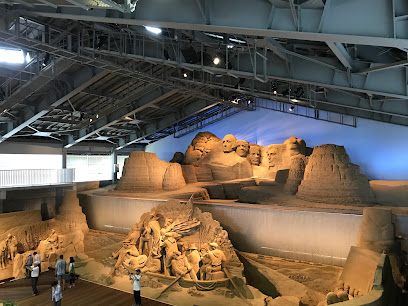
Tottori Sakyu Kodomo-no-kuni
Experience joy and adventure at Tottori Sakyu Kodomo-no-kuni, a family-friendly theme park in Japan's scenic Tottori region.
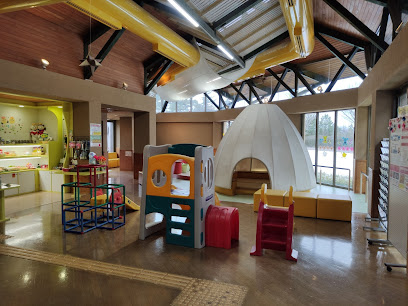
Shamine Tottori
Explore Shamine Tottori, a vibrant shopping mall in Tottori, Japan, offering exquisite shopping, diverse dining, and cultural experiences for all visitors.

Tottori Sand Dunes Visitor Center
Discover the Tottori Sand Dunes Visitor Center, where adventure meets nature in one of Japan's most stunning landscapes.
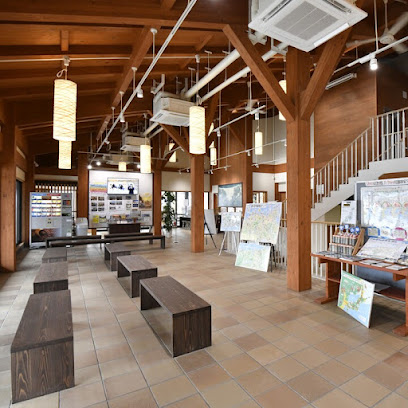
Sakyu Center Observation Terrace
Experience breathtaking views and rich cultural insights at the Sakyu Center Observation Terrace, the crown jewel of Tottori's stunning landscapes.
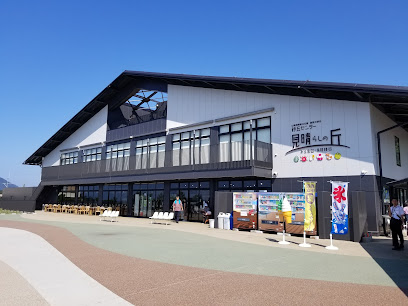
Rakudaya Co., Ltd.
Explore Tottori's cultural treasures at Rakudaya Co., Ltd., a premier souvenir store offering authentic Japanese crafts and local delicacies.
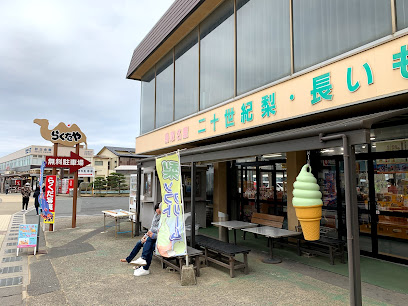
DINING&CAFE SANDBOX 1F (ダイニングカフェ サンドボックス )
Experience the flavors of Tottori at Dining & Cafe Sandbox - a perfect blend of coffee and culinary delights in a cozy setting.

SUNABA COFFEE
Experience the cozy ambiance and exquisite coffee at SUNABA COFFEE, a must-visit café in Tottori for every traveler.
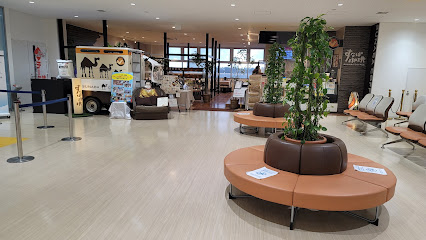
Essential bars & hidden hideouts
Shuvi du Bar
Experience the perfect blend of modern izakaya dining and bar culture at Shuvi du Bar in Tottori, offering gourmet hamburgers and traditional Japanese cuisine.

Bar Style
Discover Tottori's vibrant nightlife at Bar Style, where expertly crafted drinks and a warm atmosphere create the perfect evening retreat.

Kawamura
Discover Kawamura, Tottori's premier bar, offering an exquisite selection of global whiskies and a welcoming atmosphere perfect for relaxation.
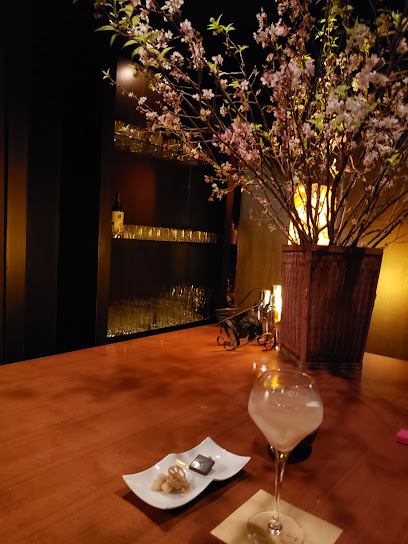
Largo
Discover the essence of whisky culture at Largo, Tottori's premier bar for imported and Japanese spirits, where every sip tells a story.

Morizo
Discover Morizo, Tottori's vibrant bar blending cocktails, izakaya delights, and a cozy atmosphere for the perfect night out.

Bar silence
Discover the flavors of Japan at Bar Silence, Tottori's cozy bar offering a unique selection of local liquors and a welcoming atmosphere.
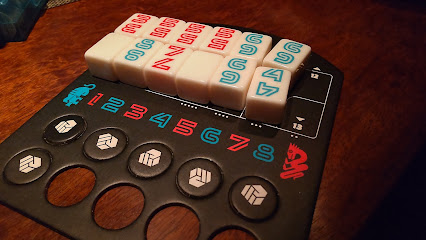
BAR Bros
Experience the vibrant nightlife of Tottori at BAR Bros, where excellent drinks and a lively atmosphere await.
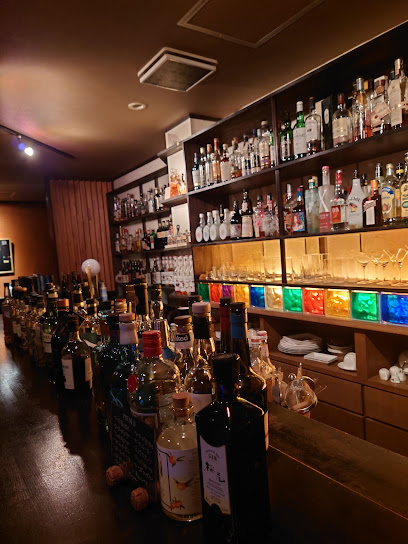
Jaunty
Experience the vibrant nightlife of Tottori at Jaunty, a cozy bar offering an extensive drink selection and a lively atmosphere.
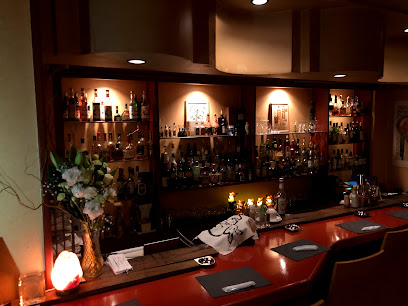
Sunny side bar サニバル
Discover the vibrant atmosphere and unique drinks at Sunny Side Bar in Tottori, a local favorite for relaxation and socializing.
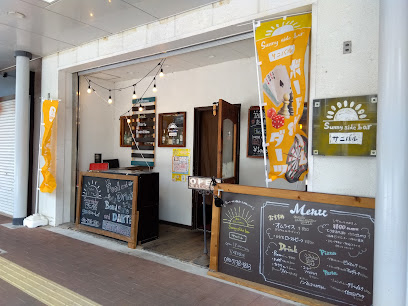
Bubinga
Experience the vibrant nightlife at Bubinga, Tottori's premier bar, where expertly crafted cocktails meet a cozy atmosphere.

Niji
Experience the vibrant nightlife at Niji, a cozy bar in Tottori offering an extensive drink menu and a welcoming atmosphere.
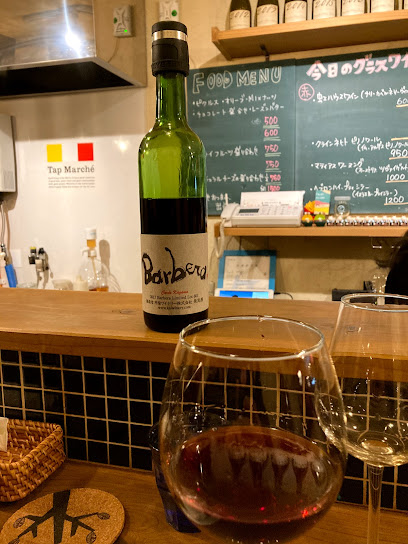
Bar Zen
Discover the cozy atmosphere and local flavors at Bar Zen, the perfect retreat for tourists in Tottori's lively nightlife scene.

Ajito
Discover Ajito, Tottori's charming bar offering a relaxed atmosphere and inexpensive drinks, perfect for unwinding after a day of exploration.
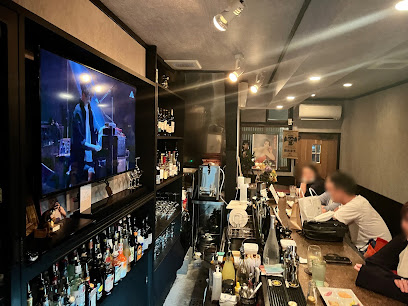
gold Rush
Discover the vibrant nightlife at Gold Rush Bar in Tottori, a must-visit destination for tourists seeking great drinks and a lively atmosphere.

Bar
Discover the charm of Tottori's nightlife at this vibrant bar, offering local flavors and an inviting atmosphere for tourists and locals alike.
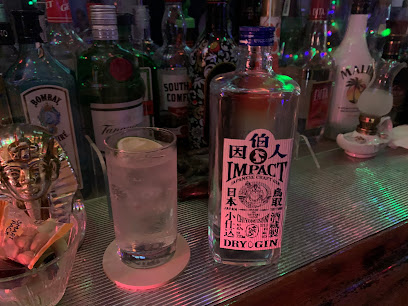
Local Phrases about Tottori Sand Dunes
-
- Helloこんにちは
[Kon'nichiwa] - Goodbyeさようなら
[Sayōnara] - Yesはい
[Hai] - Noいいえ
[Iie] - Please/You're welcomeどうぞ
[Dōzo] - Thank youありがとうございます
[Arigatō gozaimasu] - Excuse me/Sorryすみません
[Sumimasen] - How are you?お元気ですか?
[O-genki desu ka?] - Fine. And you?元気です。あなたは?
[Genki desu. Anata wa?] - Do you speak English?英語を話せますか?
[Eigo o hanasemasu ka?] - I don't understandわかりません
[Wakarimasen]
- Helloこんにちは
-
- I'd like to see the menu, pleaseメニューを見せてください
[Menyū o misete kudasai] - I don't eat meat私は肉を食べません
[Watashi wa niku o tabemasen] - Cheers!かんぱい!
[Kanpai!] - I would like to pay, pleaseお会計をお願いします
[O-kaikai o onegaishimasu]
- I'd like to see the menu, pleaseメニューを見せてください
-
- Help!助けて!
[Tasukete!] - Go away!去ってください!
[Satte kudasai!] - Call the Police!警察を呼んで!
[Keisatsu o yonde!] - Call a doctor!医者を呼んで!
[Isha o yonde!] - I'm lost道に迷いました
[Michi ni mayoimashita] - I'm ill具合が悪いです
[Guai ga warui desu]
- Help!助けて!
-
- I'd like to buy...買いたいです...
[Kaitai desu...] - I'm just looking見ているだけです
[Miteiru dake desu] - How much is it?いくらですか?
[Ikura desu ka?] - That's too expensiveそれは高すぎます
[Sore wa takasugimasu] - Can you lower the price?値段を下げてもらえますか?
[Nedan o sagete moraemasu ka?]
- I'd like to buy...買いたいです...
-
- What time is it?今何時ですか?
[Ima nan-ji desu ka?] - It's one o'clock一時です
[Ichiji desu] - Half past (10)十時半
[Jūji han] - Morning朝
[Asa] - Afternoon午後
[Gogo] - Evening夕方
[Yūgata] - Yesterday昨日
[Kinō] - Today今日
[Kyō] - Tomorrow明日
[Ashita] - 1一
[Ichi] - 2二
[Ni] - 3三
[San] - 4四
[Yon] - 5五
[Go] - 6六
[Roku] - 7七
[Nana] - 8八
[Hachi] - 9九
[Kyū] - 10十
[Jū]
- What time is it?今何時ですか?
-
- Where's a/the...?...はどこですか?
[...wa doko desu ka?] - What's the address?住所は何ですか?
[Jūsho wa nan desu ka?] - Can you show me (on the map)?地図で見せていただけますか?
[Chizu de misete itadakemasu ka?] - When's the next (bus)?次の(バス)はいつですか?
[Tsugi no (basu) wa itsu desu ka?] - A ticket (to ....)切符(...へ)
[Kippu (...e)]
- Where's a/the...?...はどこですか?
History of Tottori Sand Dunes
-
The Tottori Sand Dunes, Japan's largest, were formed over thousands of years through the deposition of sand from the nearby Sendai River. The sand was carried by the river from the Chugoku Mountains to the Sea of Japan, where it was then transported by strong ocean currents and wind, gradually creating the expansive dunes we see today.
-
During the Heian period (794-1185), the Tottori Sand Dunes served as a significant landmark for traders and travelers navigating the coastal routes of the San'in region. The dunes' prominence in the landscape made them a natural guidepost for those journeying between Izumo and the capital.
-
The Tottori Sand Dunes are steeped in local mythology and folklore. According to one legend, the dunes were created by a giant named Daidarabotchi, who scooped up a handful of sand and dropped it, thus forming the dunes. Another tale speaks of the dunes being the result of a celestial battle between gods, with the sand being the remnants of their conflict.
-
During World War II, the Tottori Sand Dunes were used as a training ground for the Japanese military. The vast, open space provided an ideal setting for maneuvering and tactical exercises. Evidence of these activities can still be found in some parts of the dunes, where remnants of training structures and equipment occasionally resurface.
-
In the post-war era, the Tottori Sand Dunes faced significant environmental threats due to urban development and deforestation. In response, the Japanese government, along with local organizations, initiated conservation efforts to preserve the dunes. These efforts included reforestation projects, restrictions on development, and the establishment of the Tottori Sand Dunes as a protected natural site.
-
The Tottori Sand Dunes hold a special place in Japanese culture, often depicted in literature, art, and film. Notably, the dunes were featured in the 1964 film 'Woman in the Dunes,' directed by Hiroshi Teshigahara and based on the novel by Kobo Abe. The stark, otherworldly landscape of the dunes provided a haunting backdrop, enhancing the film's themes of isolation and existential struggle.
-
Today, the Tottori Sand Dunes are a major tourist attraction, drawing visitors from around the world. Activities such as sandboarding, paragliding, and camel rides offer unique ways to experience the dunes. The Sand Museum, located nearby, showcases intricate sand sculptures created by artists from various countries, further enriching the cultural experience of the region.
Tottori Sand Dunes Essentials
-
The Tottori Sand Dunes are located in Tottori Prefecture, on the western coast of Japan's Honshu island. The nearest major airport is Tottori Airport, which is about 20 minutes by car from the dunes. You can also reach Tottori city by JR train from major cities like Osaka, Kyoto, and Tokyo. From Tottori Station, local buses or taxis can take you directly to the sand dunes in about 20 minutes.
-
Within Tottori, public transportation options include buses and taxis. The Tottori Sand Dunes Loop Bus is a convenient and affordable way to get to the dunes and other nearby attractions. If you prefer more flexibility, renting a car is an option, though parking near the dunes can be limited during peak times. Cycling is also a popular way to explore the area, and bicycle rentals are available at Tottori Station.
-
The official currency in Japan is the Japanese Yen (JPY). Credit cards are widely accepted in hotels, larger restaurants, and shops, but it is advisable to carry cash, especially when visiting smaller establishments or rural areas. ATMs are available in Tottori City and around the tourist areas, but not all ATMs accept international cards, so plan accordingly.
-
Tottori Sand Dunes and the surrounding areas are generally very safe for tourists. Japan has a low crime rate, but it's always wise to take standard precautions. Keep your personal belongings secure and be cautious of your surroundings, especially in crowded areas. There are no specific high-crime neighborhoods targeting tourists in Tottori.
-
In case of an emergency, dial 110 for police assistance and 119 for fire or medical emergencies. English-speaking operators may not always be available, so having someone who can speak Japanese can be helpful. It is advisable to have travel insurance that covers medical emergencies. There are hospitals and clinics in Tottori City that offer medical services, and many pharmacies can provide over-the-counter medications.
-
Fashion: Do dress comfortably and appropriately for the weather. Avoid overly revealing clothing. Religion: Do respect local customs and traditions, though Tottori Sand Dunes is not a particularly religious site. Public Transport: Do be polite and quiet on public transport. Don't talk loudly or use your phone. Greetings: Do greet people with a bow or a polite nod. Eating & Drinking: Do try local delicacies and be open to new culinary experiences. Don't eat or drink while walking, as this is considered impolite in Japan.
-
To experience Tottori Sand Dunes like a local, consider visiting early in the morning or late in the afternoon to avoid the crowds and enjoy the stunning sunrise or sunset views. Renting a fat bike or trying sandboarding are popular activities among locals. Don’t miss the Sand Museum nearby, which features incredible sand sculptures from artists around the world. Also, try the local specialty, Tottori's famous pears (Nashi), which are refreshing and delicious.
Nearby Cities to Tottori Sand Dunes
-
Things To Do in Kyoto
-
Things To Do in Nara
-
Things To Do in Hiroshima
-
Things To Do in Kanazawa
-
Things To Do in Nagoya
-
Things To Do in Fukuoka
-
Things To Do in Pohang
-
Things To Do in Ulsan
-
Things To Do in Gyeongju
-
Things To Do in Busan
-
Things To Do in Tokyo
-
Things To Do in Andong
-
Things To Do in Daegu
-
Things To Do in Daejeon
-
Things To Do in Suncheon








